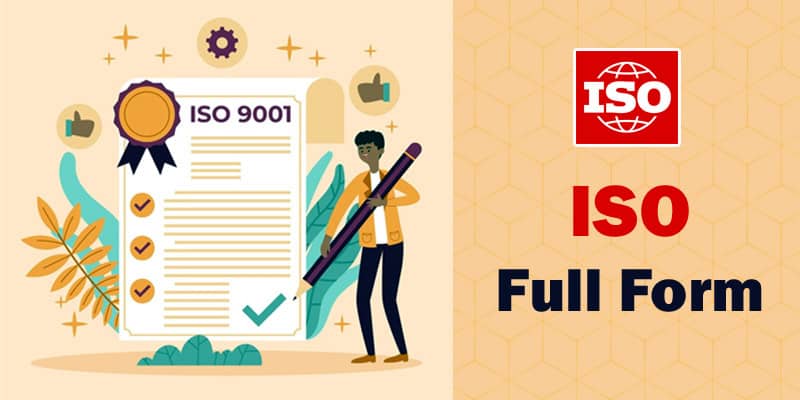ISO stands for International Organization for Standardization.
ISO Full-Form | International Organization for Standardization
It is an independent, not-for-profit, non-governmental organization with 164 national standards bodies as members. Since its inception in 1947, it has published product and service standards by identifying safety issues.
This article provides a full definition of ISO as well as a summary and purpose of the organization.
What are the International Standards?
An International Standard is a document covering world-class specifications for products, services, and systems, ensuring their quality, safety, and efficiency.
ISO has published 22663 international standards and related documents, covering almost every industry, from technology to agriculture and healthcare, to food safety.
Examples of standards in our everyday life-
- Food Safety: There are internationally agreed hygiene and safety requirements outlined in rules that make the food we purchase safely to eat.
- Credit Cards: Credit cards meet standards that specify the dimensions, technology, and communication protocols that can work anywhere with dispensers and payment systems.
How does ISO work?
Standards are developed by people who are experts and come together to develop the same through a consensus process.
Experts create international standards for various industries, including government, consumer organizations, academia, non-governmental organizations, and more. The members of their country identify these experts.
The authority rests with the ISO Central Secretariat – ISO/CS in Geneva, Switzerland – to coordinate the development process and publish the standards.
ISO Certification
It signifies the assurance (a certificate) by an independent body that the product, service, or system meets specific requirements.
Accreditation
It signifies the recognition by an independent body, which means that the certification body operates according to international standards.
Pre- Requisite to ISO Certification Process
Choose the type of ISO Certification–
Several types of ISO certification are available such as :
- ISO 9001 2008 – Quality Management
- ISO 27001 – Information security Management
- ISO 14001 – Environmental Management
- ISO 22008 – Food Safety Management
Choose an ISO Certification Body
ISO is not involved in its certification. Instead, it develops international standards.
While choosing a certification body, one should:
- Examine various certification bodies.
- Check if the certification body uses the relevant CASCO (Committee on Conformity Assessment) standard.
- Check if it is accredited. It is not compulsory to have accreditation, but they must meet the requirements of ISO Accreditation bodies.
The benefit of International Standards
- International Standards ensure that products and services that the public uses are safe, reliable, and good.
- The prescribed standards can act as a strategic tool to reduce costs by minimizing waste and errors and increasing productivity for a business. They help companies to stretch their market reach and facilitate free and fair global trade.
Conclusion
The best way to learn about new, revised, or updated ISO standards is to contact ISO directly. They would be the most reliable source because they are the organization that establishes the standards.
There are also websites that provide summaries and explanations of ISO updates to help individuals and businesses understand them. For example, the website 9001Simplified explains what changed when ISO 9001 was updated from 2008 to 2015. The 2015 update includes:
- Added clauses
- A distinct structure (high-level structure)
- Various terminologies
- A methodical approach
- More emphasis on input and output.
- At its core, risk-based thinking: a focus on the organization’s context
- Updates on leadership and commitment
- Improved compatibility with other ISO standards

